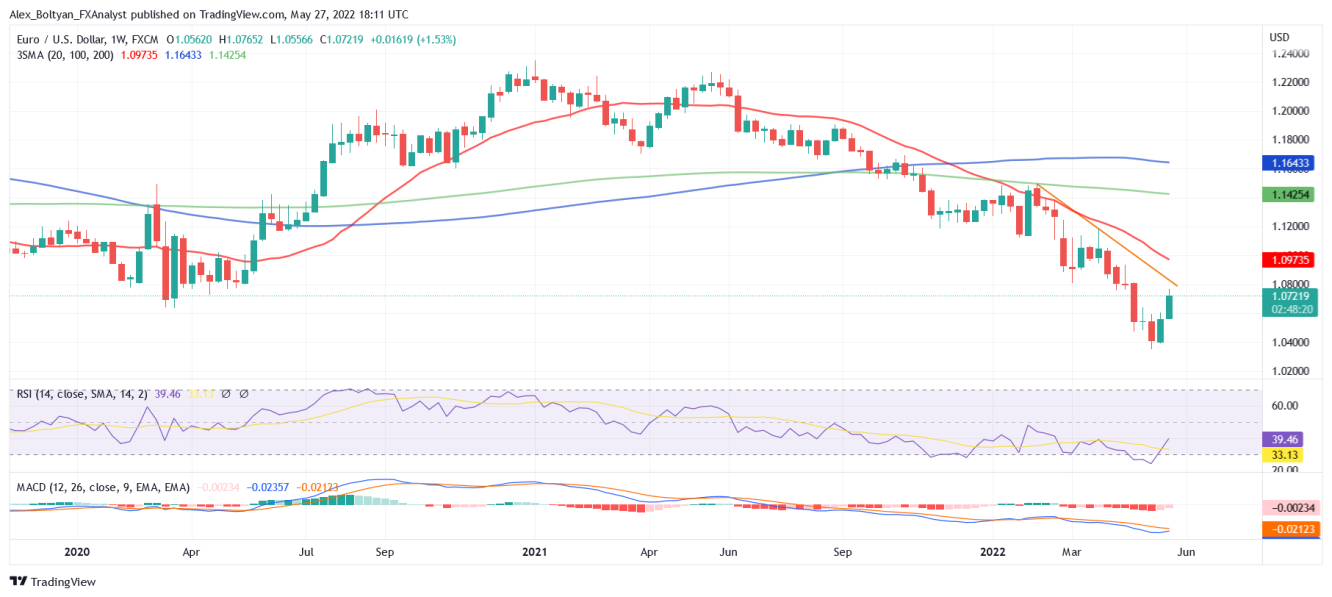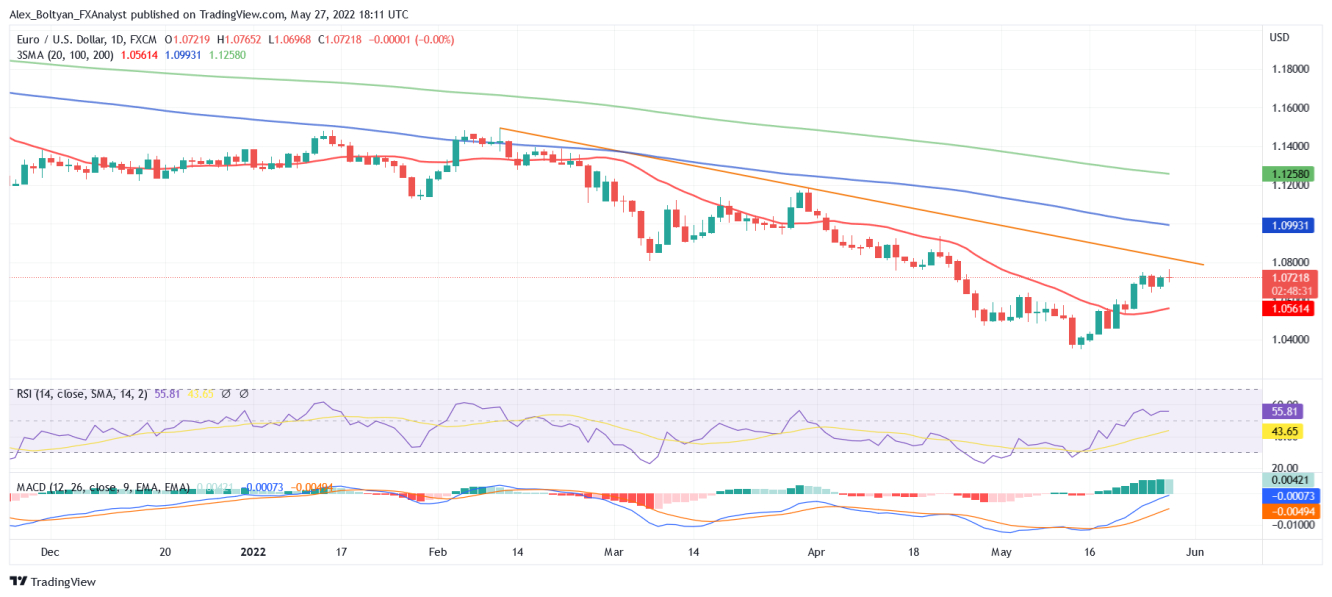The EUR/USD pair was correcting lower on Friday after posting its highest level in a month at 1.0765 during the European session. The euro failed to sustain the bullish momentum above the 1.0750 resistance area and it was trading around 1.0710-20.
Still, the shared currency was poised to record a 1.4% weekly gain, the second in a row, extending its bounce from the five-year low of 1.0348 struck on May 9.
On Friday, U.S. data showed that the Core PCE Price Index—the Federal Reserve’s preferred gauge of inflation—rose by 4.9% in May (annualized), easing down from the 5.2% rate printed in April. This could be a sign that inflation is close to peak (or even might have already done so).
Earlier this week, the Fed published the minutes of its May meeting, which showed FOMC members bracing for two more 50 bps rate hikes. But, if inflation proves to be slowing down, the bank might take a more gradual approach to avoid taking an unnecessary toll on growth.
On Thursday, U.S. GDP figures showed the economy contracted by 1.5% in the first quarter, more than the preliminary estimate of 1.4%.
Meanwhile, the European Central Bank has continued hinting at the beginning of the hiking cycle, as soon as July, which along with a technical correction, has helped the euro to recover from five-year lows.
From a technical viewpoint, the EUR/USD pair holds a negative bias according to the weekly chart. Both the RSI and the MACD remain in negative territory although the bearish momentum seems to be dwindling.
However, the pair retains the positive tone in shorter-term charts. The daily indicators favor an upward continuation, but EUR/USD might need to break decisively above 1.0750 to attract more buyers.
In that case, a descending trendline drawn from February, currently at 1.0815, would become a significant resistance level ahead of the 1.0900 area.
On the other hand, the 1.0640 zone stands as immediate support followed by the 1.0600 level and the 20-day SMA around 1.0560.



